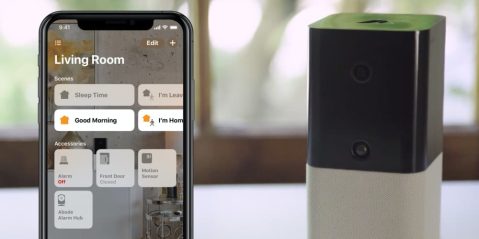
By all accounts, Apple is set to unveil its first Apple Silicon-based Macs in the next few weeks. While there is much to discuss around the benefits of Apple Silicon for the general consumer, there will be massive benefits to Apple’s strategy in K-12 and the enterprise.
About Making The Grade: Every Saturday, Bradley Chambers publishes a new article about Apple in education. He has been managing Apple devices in an education environment since 2009. Through his experience deploying and managing 100s of Macs and 100s of iPads, Bradley will highlight ways in which Apple’s products work at scale, stories from the trenches of IT management, and ways Apple could improve its products for students.
Over the past decade, Apple’s education strategy has moved to the iPad as the primary device. While the iPad is a fantastic device, there are certain areas where traditional laptops are more comfortable to use or more efficient. The primary debate over this period has been the iPad vs. Chromebook. With Apple Silicon, it’s possible that discussion may become tri-fold.
One of the reasons the iPad was Apple’s tool of choice in education was its price point. Even at its debut price of $499 in 2010, it was significantly less than the current laptops at the time. As Chromebooks came on the market, the iPad saw downward pressure on the price to its current spot at $299 for schools.
The race to the bottom for pricing has continued in 2020. The sudden rush to distance learning meant that schools were no longer concerned about the lowest cost products but the best value for their students. With many students now using technology 100% of the time during the school day, things like all-day battery life, storage space, and processor speed were now brought to the forefront again, and the timing could not be better for Apple.

With the introduction of Apple Silicon, Apple is in direct control of their hardware and software now. Apple’s A-Series chips have become well known for being power efficient while remaining fast. Modern iPads will be usable for many years until the batteries degrade to being unusable. Apple’s original Apple TV HD based on the A-series is still one of the fastest set-top boxes on the market despite it only running Apple’s A8 chip. So what does this mean for education?
I believe that Apple will have untold flexibility in what kind of laptops they can produce for schools now. Is it possible to build an 11″ MacBook based on Apple Silicon that is $799 when purchased in bulk but still runs extremely fast? I believe so. It might not be in the first year or two of Apple Silicon’s lifespan that we see it, but in a few years, it’s certainly possible that Apple will have reduced the cost on the A14 to put it in a K–12 focused laptop in the future.
Wrap-up on Apple Silicon in K–12
I could be way off base on my predictions. Still, I believe that Apple Silicon will unlock a lot of potential in K–12 to produce lower-cost laptops that will run circles around much higher priced laptops running Intel chips. I’d love to see an 11″ Apple Silicon laptop aimed directly at students that could be used for many years.
FTC: We use income earning auto affiliate links. More.






Comments